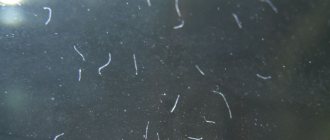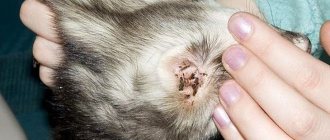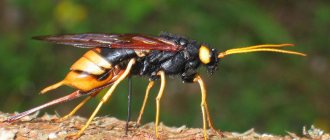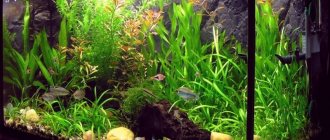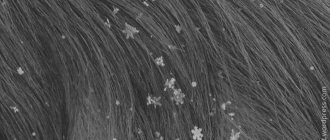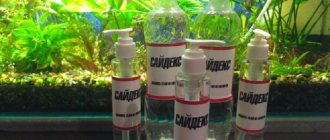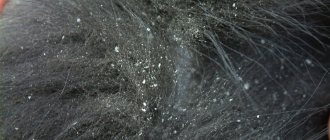Beginners in the aquarium hobby confuse algae with plants, although the difference between these concepts is enormous. Higher plants decorate the aquarium and create the necessary conditions for fish to live. Algae are weedy organisms that attack higher plants and, in some cases, aquarium fish. Many aquarists are faced with the appearance of a green coating on glass, soil and decorations. Unwanted greenery in the aquarium spoils the impression of the underwater world.
Description of the problem
Green deposits can be caused by different types of algae. The most common species found in aquariums are xenococus, protococus and “green dust”. If protococcus is present in an artificial reservoir, only the glass becomes covered with a green coating. “Green dust” can live not only on the walls of the tank, but also on the surface of the water, forming a film. Xenococus parasitizes glass, soil, decorations and higher plants.
Plaque formed by colonies of unicellular algae becomes compacted over time and is difficult to remove from surfaces. If the aquarium is heavily overgrown, the activity of pests can affect the quality of the water. Parasitism on higher plants interferes with photosynthesis and inhibits their growth.
What to do if dirty
To get rid of green plaque, you need to clean it. You can do this yourself, without resorting to the help of specialists. To clean an aquarium at home, you will need tools that can be purchased at any pet store:
- glass scraper;
- water capacity of at least 10 liters;
- settled, clean water for replacement;
- siphon pump;
- aquarium glass cleaner;
- baking soda or wine vinegar for cleaning the tank;
- bleach 10%;
- blade.
Cleaning will take some time, but will immediately get rid of the green deposits, returning the aquarium to its former beauty.
How to clean an aquarium:
- remove fish and plants so as not to stress the inhabitants when cleaning;
- remove the greenish coating from the inside of the glass with a scraper, use a blade in difficult to clean places;
- pump out the water using a siphon pump: lower the end of the pump to the bottom, and send the other end into an empty deep container;
- if the stones turn green, rinse them thoroughly under running water;
- wash the soil with a siphon pump;
- Wash all decorative elements separately; if heavily soiled, use bleach;
- pour soil into the tank, add decor and fill with purified, prepared water;
- Before adding fish, wait two to three hours for the particles to settle to the bottom and the water to become clear;
- rinse the outside of the tank: take soda, detergents, go through with a sponge, wiping each element;
- rinse the filter by completely disassembling it; hard-to-reach places can be washed with a toothbrush or cotton swab;
- plant the plants and return the fish to the cleaned tank.
If you regularly wash and clean the tank and change the water once a week by 20%, you can avoid the formation of green deposits in the aquarium.
Reasons for appearance
Single-celled algae are always present in small quantities in water bodies, but they begin to multiply quickly only when conditions change to favorable for them. The main reasons why greenery appears on the walls of the aquarium are as follows:
- accumulation of phosphorus more than 0.8 g/l;
- excess nitrogen compounds and disruption of the nitrogen cycle;
- water temperature is above 27°C or below 22°C;
- exposure to direct sunlight;
- daylight hours are too long;
- overfeeding the fish and overcrowding the aquarium;
- accumulation of organic matter;
- poor filtration;
- insufficient or slow growth of higher plants;
- excess or lack of fertilizers;
- increased salt content in water;
- infrequent cleaning and water changes.
The main reason is a violation of the nitrogen cycle and the balance of phosphorus and nitrogen, as well as the accumulation of organic matter. Normally, nitrogen compounds, phosphorus and organic matter are utilized by higher plants. If plant growth slows down for some reason (low water temperatures, lack of carbon dioxide, lack of fertilizers), unused nutrients accumulate in the water and become food for algae. Rare cleaning and water changes contribute to the accumulation of these compounds.
Green plaque on stones and how to deal with it
Among the many problems that an aquarist (and even a very experienced one) may encounter, a dark green coating on the stones in an aquarium is one of the most common. The name of this problem is xenococcus . These are algae that love a lot of light and more or less exceeded values of organic matter dissolved in water. Simply put, if your aquarium is too brightly lit, and the fish do not have time to eat all the food that is offered to them, then the xenococus will definitely settle on stones, decorations, walls and plant leaves.
Most often, algae on rocks in an aquarium appear in brightly lit herbal gardens, where there are many long-stemmed plants, and the CO2 concentration fluctuates greatly during the day. But even the most ordinary aquariums with lighting of no more than 0.5 watt/l can suffer from this scourge. It is almost impossible to insure against it. There are only general recommendations on how to slow it down or reduce the “scale of the disaster.”
If the stones in the aquarium turn green, first of all try to reduce the length of daylight hours (it should be no more than eight hours). Find an opportunity to replace the lamps with less powerful ones. The coating itself (by the way, it is very hard) cannot be cleaned with brushes, scrapers and other devices. The easiest way is to remove large stones and boil them, or simply put them in a dark place for several weeks, which will kill the algae to the last molecule.
Well, if you like the existing design of the aquarium with stones and sort through all the soil, you absolutely do not want to remove the decorations, you can use TetraAqua AlgoStop depot . It is available in tablets, which are placed on the ground in the place where the movement of water is especially strongly felt, and over the course of six weeks they slowly dissolve, releasing the active substances. After this period has expired, the tablets should be removed - they are no longer effective.
How to get rid of green deposits in an aquarium
To completely get rid of algae fouling, you must first determine the cause of its appearance. If it is not eliminated, the plaque will appear again. Most often, it is enough to change the conditions (lighting, temperature, etc.) and mechanically clean the reservoir of overgrown algae. In advanced cases, algaecide preparations are additionally used.
Mechanical method
Green plaque on the walls of the aquarium is cleaned off with a sponge or a special scraper. The algae in the water is collected using a siphon. The same tool is used to clean the soil. Stones, driftwood and other decorations are removed from the aquarium, wiped with a sponge or brushed under running water to wash them off algae fouling. If the plaque cannot be removed, the decorations can be soaked in a bleach solution for 15 minutes, after which they must be doused with boiling water and dried. Internal equipment (filter, hoses) is wiped with a sponge or brushed using water from the aquarium.
Biological method
You can clear the aquarium of green deposits by introducing inhabitants into it that use algae as food. It can be:
- fish - Siamese algae eaters, swordtails, platies, mollies, goldfish, otocinclus, ancistrus, corydoras, labeo;
- crustaceans – daphnia, cyclops, Amano shrimp, cherry shrimp;
- snails - ampularia, theodoxus, neretina.
In addition, the use of fast-growing living plants (hornwort, elodea) is effective: they absorb excess organic matter, depriving algae of nutrients.
Special preparations
If the damage to the reservoir by algae is severe and simple adjustments to the conditions do not help eliminate the problem, you can get rid of the greenery in the aquarium using special algaecide preparations. These can be ready-made products for aquariums based on glutaraldehyde or monolinuron, as well as various antibiotics. It is effective to use streptomycin, which is dissolved in boiled water at the rate of 3 mg per 1 liter of water in an aquarium and introduced into the tank through a filter. Riboflavin, trypaflavin and rivanol are also used at a concentration of 0.1 g per 100 liters of water. The safest drug is 3% hydrogen peroxide at a concentration of 2-6 mg/l.
Creating optimal conditions
To combat green growth in an aquarium, it is necessary to create conditions that are unfavorable for algae growth. The aquarium is placed so that it is not exposed to direct sunlight. The duration of daylight hours should not exceed 8-10 hours. Use lamps that produce cold light. The water temperature is maintained at 24-26°C, the pH is increased. To avoid excessive accumulation of phosphorus, fertilizers are applied strictly according to instructions. If the reservoir is overpopulated, some of the hydrobionts are removed. The food is poured in such quantity that the fish eat it in 5-10 minutes. Increase filtration and aeration.
Water change
Changing the water helps remove green deposits. It is performed simultaneously with mechanical glass cleaning and soil siphoning. At the same time, the cleared algae and organic sediment at the bottom of the reservoir are removed. A siphon is used to carry out the procedure. To prevent the appearance of algae, it is necessary to change the water weekly. In this case, 1/4 or 1/3 of the tank volume is replaced. The water is drained using a hose. Fresh water must be filtered or settled. Changing the water allows you to get rid of excess nitrogenous substances, phosphates, salts and organic matter. In addition, it is necessary to remove excess drugs when treating fish.
other methods
The aquarium can simply be left for 3-4 weeks without performing any procedures or adding fertilizer. After the algae plaque turns white, it is scraped off and 30% of the volume is replaced with fresh water. It is important not to remove fouling prematurely to prevent algae from forming spores. You can also clean the aquarium from green deposits using salt. It is added at a concentration of 1 g/l; this inhibits the development of algae. Adding salt is only an additional control measure. It is important to carry out other manipulations at the same time.
The most common problems when maintaining an aquarium
Every underwater lover in the room has had to deal with aquarium cleanliness issues at one time or another.
The most common problems.
- Cloudy water . The water loses its transparency and acquires a whitish tint. Most often this happens in a new aquarium that has just been stocked with fish. This phenomenon is temporary. The development of a mass of bacteria makes the water opaque. This continues for two to three days. With proper feeding of the fish and optimal temperature conditions, the next stage in the formation of the underwater world begins - the biological balance between single-celled organisms and more highly organized ones. The infusorial haze disappears.
- Rotting in the ground . After some time, the soil may become covered with a dark film and periodically release bubbles. Rotting occurs of organic residues that entered the soil initially or during the process of feeding the fish. To prevent this from happening, it is better to underfeed your pets than to overfeed them. An additional means of combating organic matter in the soil are snails.
- Changing the color of the water to green or brown . This happens due to the development of algae in the water: green, blue-green or brown.
- Plaque formation on the walls . The plaque can also be green or brown.
These two problems are interrelated, often have common causes, and the means to eliminate them are also the same. Plaque on the walls is the biggest nuisance in the life of an aquarium.
Prevention
In order to prevent the appearance of greenery on the walls of the aquarium, follow the following recommendations:
- the duration of daylight hours is maintained at 8-10 (no more than 11) hours;
- avoid overpopulation of the reservoir and overfeeding its inhabitants;
- plant the tank with fast-growing plants;
- apply fertilizers according to the manufacturer’s instructions;
- regularly siphon the soil, clean the glass and change the water;
- maintain the pH at a high level (for example, by adding shells to the pond);
- control water temperature, filtration and aeration.
How to remove green plaque?
The answer is obvious - first of all, you yourself, with the help of a high-quality aquarium scraper and the right special preparation. Less often or more often, but you cannot do without a scraper, no matter what chemistry you use. Although, without a doubt, special products to combat green plaque, such as Organic Aqua (old name Cidex Aqua), can help you a lot.
Signs
Signs of ecosystem disturbance:
- cloudiness of water;
- change in color of the liquid to green and brown;
- the scenery, water surface and soil are covered with a green film or coating;
- increased content of phosphorus and nitrates;
- abundant appearance of green plaque in the aquarium.
Plaque in small quantities is considered normal. Don't be alarmed if you notice a few green dots in your aquarium. Observe the flora; if the glass becomes more green and the water becomes cloudy, this should be a cause for concern.
What danger does flowering pose?
A small bloom does not mean some kind of global catastrophe for underwater inhabitants.
If the problem is not resolved in time, the flowering will become large-scale, the consequences will be as follows:
- The amount of nutrients in the water area will decrease.
- Oxygen levels will decrease.
- An imbalance in the aquatic ecosystem will appear.
- Some fish may die, while others, more resistant ones, will begin to get sick and waste away.
The presence of green water is a clear indication of an imbalance in the aquatic environment; such a violation will not disappear on its own; the problem of why the water in the aquarium turns green should be solved immediately.
If greenery constantly appears
The reasons for the appearance of green plaque are also:
Additional means are:
Adviсe
To maintain the biobalance of the reservoir and proper cleaning, follow the recommendations:
- Do not use kitchen sponges or scrapers that have come into contact with detergents to clean the aquarium. Residues are dangerous for fish.
- If it is not possible to turn on and off the aquarium light at a certain time, time relays come to the rescue, which automate the change of day and night in the aquarium.
- It is better not to use metal scrapers and blades, as they leave scratches on the walls of the aquarium. Instead of a scraper, use a plastic card and thin wooden spatulas.
- If you cannot get rid of plaque on stones and decorations, soak them in bleach for 15 minutes, then pour boiling water over them.
- Avoid soil contamination due to overfeeding fish. The poured food is eaten in 5 minutes.
Under natural conditions, the water is saturated with green algae. Aquatic inhabitants eat lower plants. For herbivorous fish, greens are the basis of the diet, for others it is a necessary addition. Algae serve as a habitat for small crustaceans.
(Visited 5,760 times, 82 visits today)
